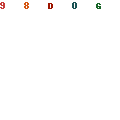Table of Contents
Introduction
Millions of people worldwide participate in the popular sport of golf. Players must negotiate a path with the fewest amount of strokes possible in this game of accuracy, strategy, and skill. There are particular rules that regulate golf in order to guarantee fair play and preserve consistency throughout the game. What are the rules for golf? will be addressed in this in-depth tutorial.
What Are the Rules for Golf?
The way the game of golf is played is governed by a set of rules. The behaviour of players, the use of equipment, and scoring are all covered by these rules. Players guarantee a fair and equal playing field for all participants by abiding by these guidelines. Let’s now examine some of the major golf regulations.
The Basics of Golf Rules
Teeing Off
Players must tee off from predetermined locations known as teeing grounds to begin a hole. The ball must be played from inside and between the teeing ground markers. The ball can be raised a little bit above the ground by the player using a tee. Unless otherwise permitted by special rules, the ball must not be touched or moved once it enters play.
Fairway and Rough
The well-kept grassy space between the teeing area and the putting green is referred to as the fairway. It is the best surface for shooting. A player’s ball enters the rough if it lands outside the fairway, though. The grass in the rough is usually longer and thicker, making shots more difficult.

Hazards
Hazards are frequently put in strategic locations on golf courses to increase game difficulty. Water features, bunkers, and off-limits places can all be hazards. When a player’s ball enters a hazard, there are certain regulations that dictate what they should do next. For instance, a player may use a penalty stroke and place the ball behind a water hazard.
Scoring and Stroke Play
Each golfer counts the total number of strokes needed to complete the course in stroke play, the most popular type of the game. At the end of the round, the player with the fewest strokes wins. In addition to stroke play, there is match play, in which competitors face off against one another hole by hole.
Etiquette and Conduct
In the game of golf, sportsmanship and decorum are highly valued. Players are expected to treat the golf course, their fellow competitors, and other players with respect. This includes abiding by clothing standards, keeping noise levels down, and not harming the course.

Frequently Asked Questions about Golf Rules
What happens if my ball goes out of bounds?
If your ball crosses the line of play, you must add a penalty stroke and start your next shot from that location.
Can I move loose impediments on the course?
Yes, in general you are allowed to move loose obstructions on the course like stones, twigs, and leaves. There are, however, some exclusions, as when the ball is in a danger.
What is the maximum number of clubs I can have in my golf bag?
The most clubs that can fit in a player’s bag is 14. There may be consequences if you carry more than 14 clubs.

Can I ask for advice from someone other than my caddie?
In general, you are not allowed to consult anyone save your caddie. There are, however, exceptions when playing in teams or when a particular regulation allows it.
What happens if my ball hits another player’s ball on the green?
There is no penalty if your ball touches another player’s ball on the green. Both players proceed with their separate shots after playing the ball where it currently lies.
Can I repair a divot on the fairway?
Yes, you should fill in divots in the fairway. This contributes to course upkeep and improves playing conditions for all golfers.
Conclusion
In conclusion, it is crucial for every golfer to comprehend the game’s regulations. You may ensure a fair and pleasurable experience on the golf course by being aware of and abiding by these regulations. Each element of the game has precise rules that must be followed, from teeing off through scoring. So keep in mind to follow the rules and uphold the spirit of the game the next time you enter the course.






